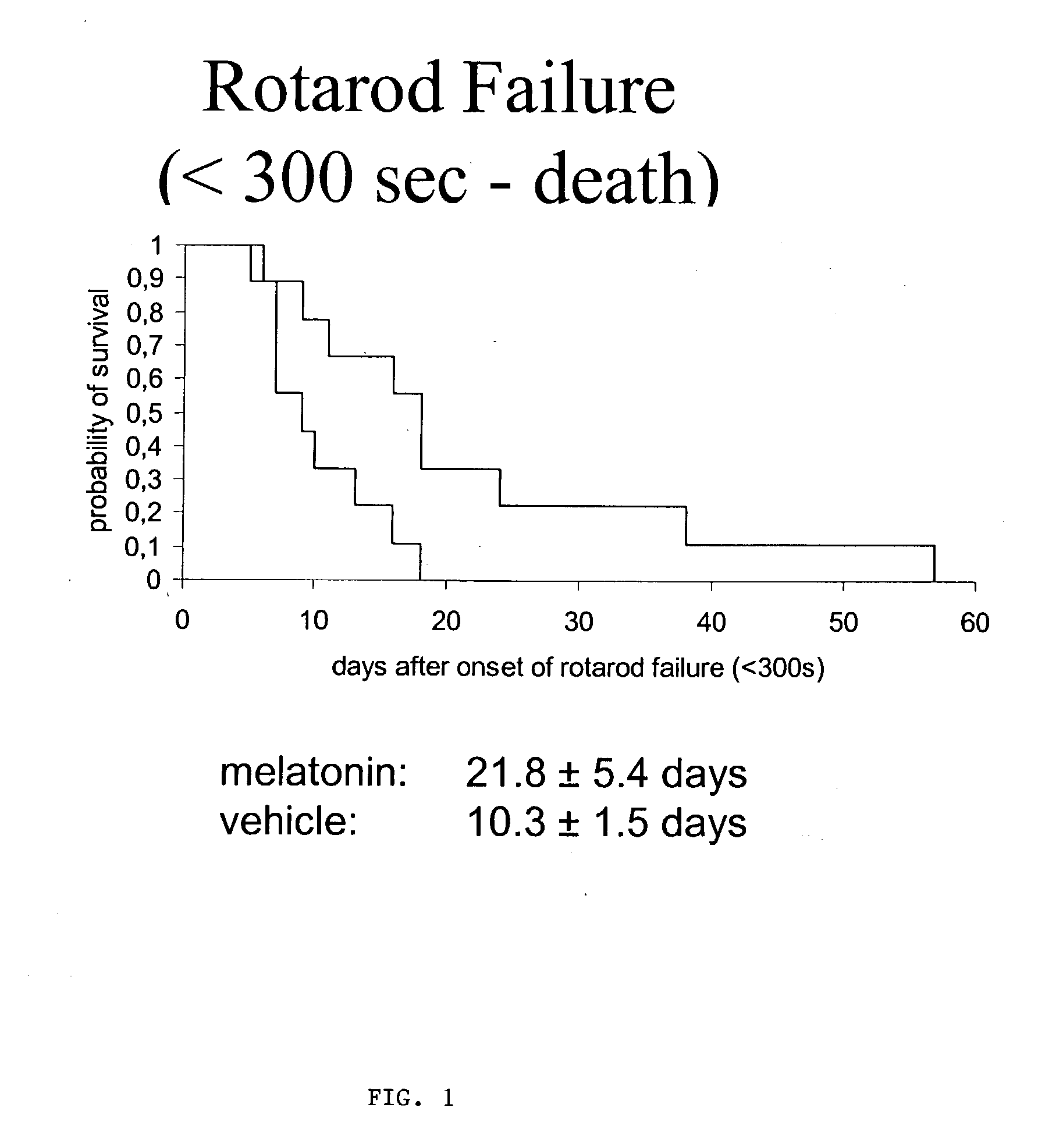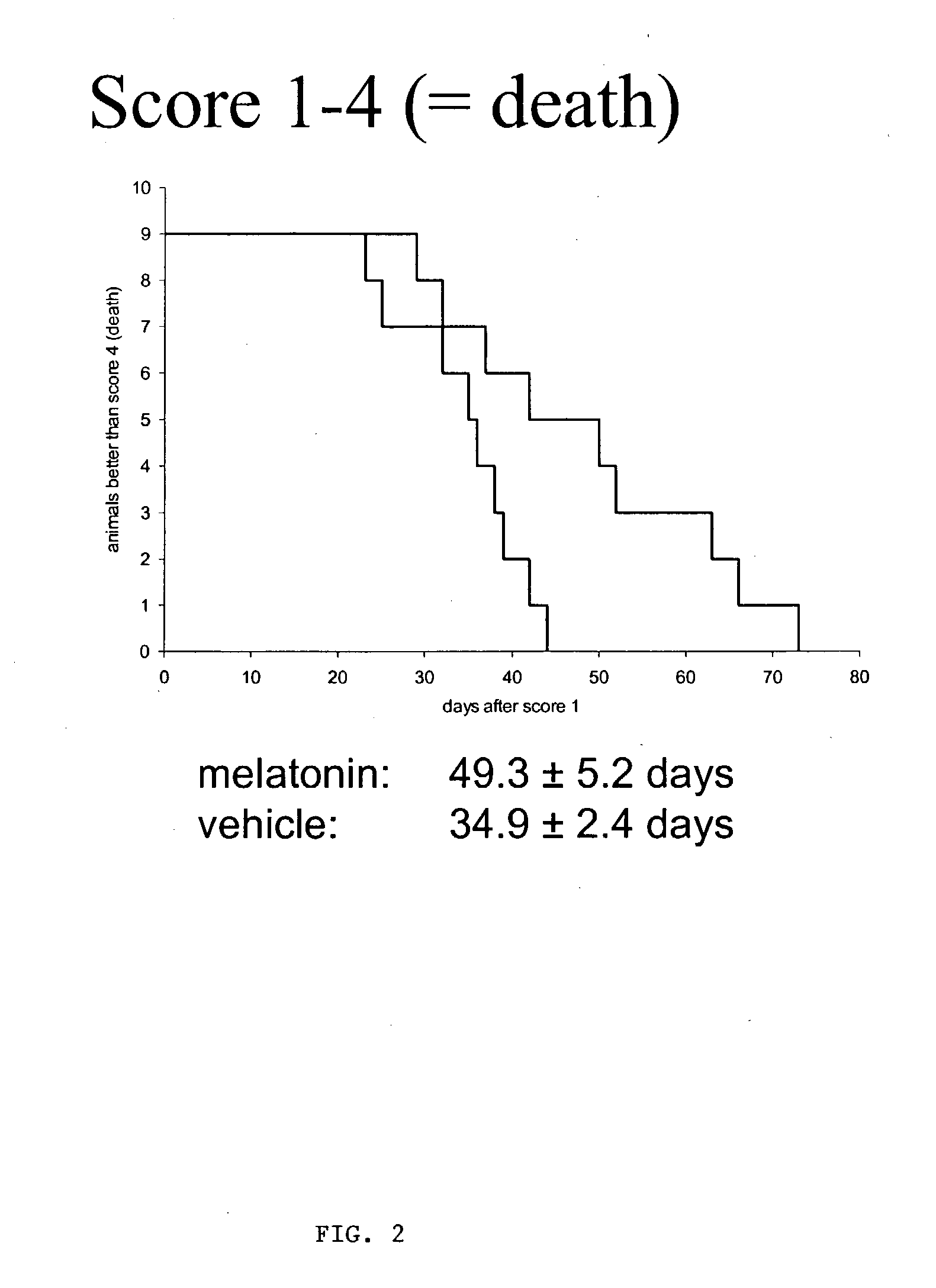Method of treating amytrophic lateral sclerosis using melatonin
a technology of amytrophic lateral sclerosis and melatonin, which is applied in the field of treating amytrophic lateral sclerosis using melatonin, can solve the problems of not being able to achieve promising treatment and melatonin has not been evaluated for its effects
- Summary
- Abstract
- Description
- Claims
- Application Information
AI Technical Summary
Benefits of technology
Problems solved by technology
Method used
Image
Examples
example 1
[0034] Three ALS patients with an estimated onset of disease 2-4 yr previously, were included in a pilot program in Gottingen, set up to explore potential effects and side-effects of chronic high-dose melatonin in this condition. Intraindividual follow-up (upon entering the study, and after 1, 2, 6, 9 and 13 months of treatment thus far) included physical examination / clinical rating scales (ALS functional rating scale, ALSFRS), pulmonary function test, EMG-NCV, routine laboratory parameters, psychological rating scales, as well as magnetic resonance imaging and MR spectroscopy. Patients received 30-60 mg of melatonin as an oral slow release formulation in the late evening. In addition, they continued their "regular medication" in the morning and at noon (RIUZOLE.RTM. 50-100 mg, vitamins C and E, creatine, amitriptylin).
[0035] Melatonin was well tolerated over the entire observation period. No side effects have been reported or detected thus far. In particular, no signs of fatigue ha...
example 2
[0038] Using SODG93A-transgenic mice as an animal model for ALS, we were able to show significant improvement in survival and course of disease, including several functional and behavioral parameters, e.g. rotarod performance, progression of paresis or weight loss, upon high oral melatonin treatment. No adverse effects of systemic melatonin were observed, even after application of several months. Melatonin was continuously applied via drinking water (0.5 mg / ml of water containing 1% of ethanol to enable a saturated solution of melatonin) starting on day 28 of life and continued until death. The vehicle control received water containing 1% of ethanol.
PUM
| Property | Measurement | Unit |
|---|---|---|
| Mass | aaaaa | aaaaa |
| Mass | aaaaa | aaaaa |
| Mass | aaaaa | aaaaa |
Abstract
Description
Claims
Application Information
 Login to View More
Login to View More - R&D
- Intellectual Property
- Life Sciences
- Materials
- Tech Scout
- Unparalleled Data Quality
- Higher Quality Content
- 60% Fewer Hallucinations
Browse by: Latest US Patents, China's latest patents, Technical Efficacy Thesaurus, Application Domain, Technology Topic, Popular Technical Reports.
© 2025 PatSnap. All rights reserved.Legal|Privacy policy|Modern Slavery Act Transparency Statement|Sitemap|About US| Contact US: help@patsnap.com


